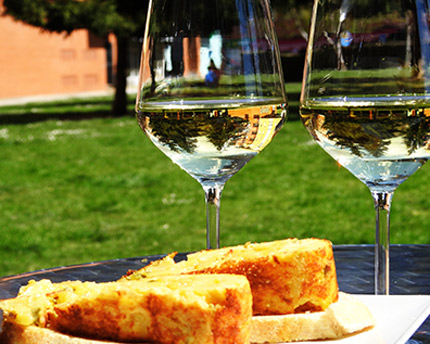Generally speaking, León’s traditional food is fairly hearty and protein-based. And it is easy to see why when you visit in winter. But the local cuisine is also very diverse in terms of ingredients and, of course, very discerning when it comes to flavour combinations.
Although home-cooked food is at the heart of the local cuisine, bars and restaurants (link to URL Where to eat in León?) are some of the best places to sample it. You will also find updated takes on the traditional cuisine, with somewhat less caloric dishes made without renouncing the flavours that make the food of León so appetising. Below are some of its most popular recipes.
Cocido maragato
This is perhaps the traditional dish that is best known outside of the province of León. The dish, the star of the restaurants and eateries in the La Maragatería region, is the local version of cocido castellano (link to www.barcelo.com/guia-turismo/es/espana/madrid/que-ver/cocido-en-madrid) and its peculiarity lies in the fact that the different parts are eaten in reverse order. First, the meat, then the chickpeas with vegetables and finally the soup.
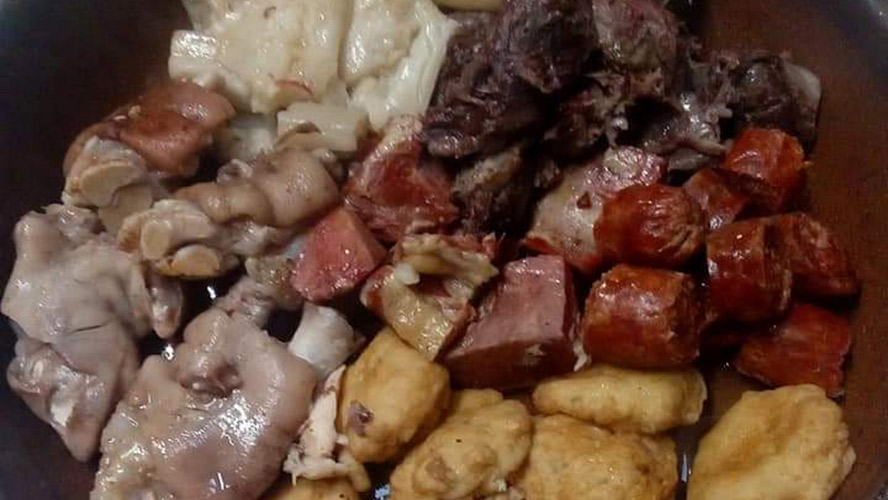
León morcilla
The main difference between this emblem of León’s tradition cuisine and other blood sausages is that instead of being made with rice (such as in the case of morcilla de Burgos), its main ingredient is onion, apart from pig’s blood, of course. Since it has a lighter consistency than its neighbouring Burgos version, the way it is cooked is also different. Generally speaking, it is grilled, although it is also delicious in empanadas, croquettes or as a garnish for winter stews.
Cecina
Together with morcilla, cecina is the cured meat that best represents León’s traditional cuisine. This dry-cured beef from the mountains of León is a true delight and a rival to the best Iberian ham. In recent years, producers have also begun to experiment with other beef breeds, such as Wagyu, with meat marbling that makes it even more succulent. It is usually eaten as it is cut, sometimes dressed with a drizzle of extra virgin olive oil.
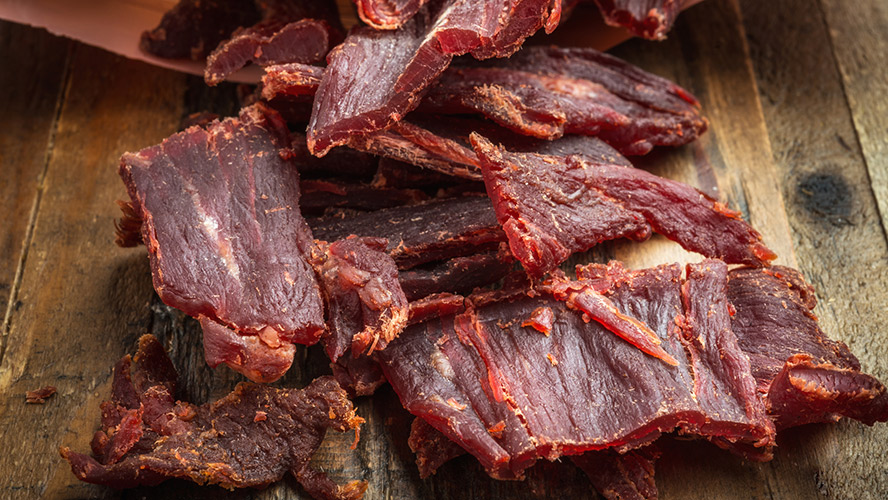
Sopa castellana
Out of all of León’s traditional dishes this is perhaps the most simple, economical and popular. Using olive oil, garlic, ham or chorizo, paprika, bread, egg and water, in no time at all you can make a soup that is as restorative as it is tasty. In winter it appears daily on the set menus of restaurants and is usually served as a first course in many homes in León and the rest of the region.
Tortilla guisada
This dish, a Spanish omelette in sauce, is a good example of traditional zero-waste cooking. Key to it is the potato omelette, which should be made one or two days in advance. It is then cooked for around five minutes in a sauce made from sautéed garlic, onion, peppers, paprika and some chopped chorizo. The slices of omelette are best served with a generous helping of the sauce for dipping your bread into.
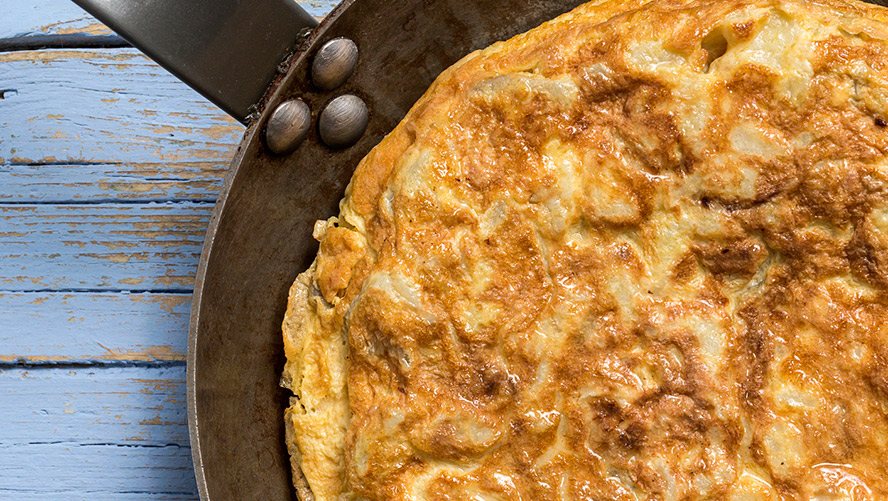
Sopa de truchas
For many centuries, the only fish that the people of León could eat, apart from salted cod, was the trout that inhabits the mountain rivers. This traditional Leonese recipe therefore goes a long way back. The soup in which the pieces of trout are cooked is made from sautéed onion, bay leaves and collard greens, to which mashed garlic and paprika is added, and, once cooked, pieces of bread. Made in an earthenware dish over a wood fire, it is truly delicious.
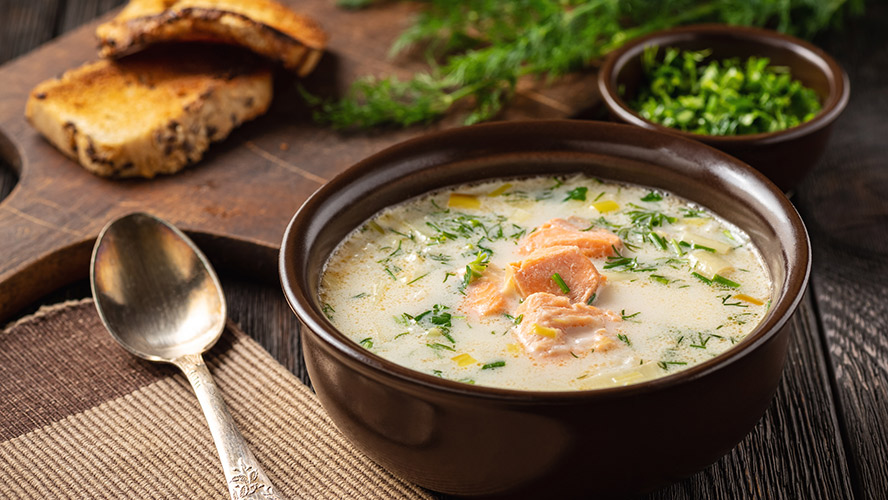
Migas del pastor
Rather than being from León, migas al pastor is a dish from inland Spain closely related to the seasonal movement of livestock and the importance of sheep farming for the country’s economy in times gone by. It is made from breadcrumbs, sautéed in olive oil, with garlic, chorizo, bacon and a few drops of water. And, yes, it is as hearty as it seems but also irresistible.
Botillo
Botillo is pork intestine stuffed with different offal cuts from the same animal seasoned with paprika, much like a sausage. The name also refers to the stew that is made from cooking the product. It is a speciality of El Bierzo and the region of Laciana and is usually served with cooked potatoes, chorizo, rapini leaves or cabbage.

Bacalao al ajo arriero
The name of this dish comes from the mule drivers, or wagon drivers, who it is believed were the first to make it. It is made using pieces of cod fried in oil, in which sliced garlic and a pinch of paprika are then cooked. The sauce is then poured over the fish and served.
León’s traditional desserts
Desserts and sweet treats are very popular in León and its surrounding province, which is understandable considering the harsh climate. Many of them originate from its Muslim and Jewish past and later from the convents where convert cooks worked at the service of the ladies of Christian nobility. Others are based on the different agricultural produce cultivated in the area, such as chestnuts and honey. Below are some of León’s best-known traditional desserts and confectionery:
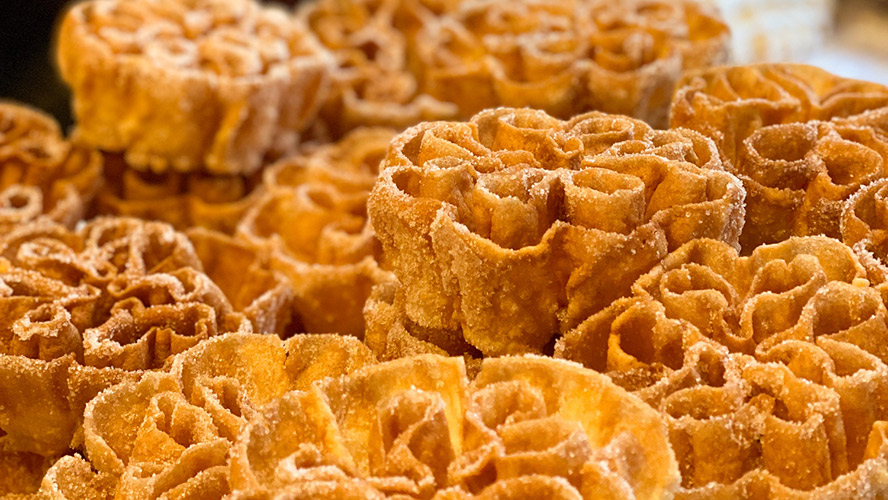
Mantecadas de Astorga
small sponge cakes oven-baked in little, square paper cups, like muffins. The secret to their success is that they are made using clarified butter, which makes them delicious.
Nicanores de Boñar
except for the family that has been making them since 1880, no-one knows the exact recipe for these indulgent puff pastries made from flour, butter and caster sugar.
Imperiales de La Bañeza
these sweets are similar to sobaos, although they are much lighter and also taste of almonds, which is the ingredient that sets them apart.
Canelas de León
named after both the spice that gives them their characteristic scent and the confectionery shop where they were first sold, they are made from fried puff pastry, filled with crème patisserie and sprinkled with caster sugar.
Hojaldres de Astorga
also known as mielitos, these square-shaped pastries can be found in many other places throughout the country. They are perfect to round off a meal, for an afternoon snack or for grazing in between meals.
Besitos de La Bañeza
these traditional sweet treats are known in many places as coquitos, which comes from the word coco, meaning coconut. And, in fact, it is the dessicated coconut, together with egg and sugar that gives them flavour.
Amarguillos de Sahagún
these are dry oven-baked pastries topped with an almond and are one of the most famous convent pastries in León.
Where to stay in León
Being in the middle of the Camino de Santiago, León has always been a very welcoming city with a wide range of accommodation, some of which have a lot of history. But times have changed and travellers now look for amenities that make them feel at home. And that is exactly what the following establishments have to offer.
Hotel Barceló León Conde Luna. In the city centre, just a five-minute walk from the cathedral and very close to the bar and restaurant district, is this fairly modern hotel. In total it has 136 bright rooms, decorated with a modern design and equipped with the latest technology. In terms of food they particularly stand out, boasting two of the city’s best restaurants, on the one hand, Casa Mando, specialising in traditional Leonese cooking, and, on the other, Nimú Azotea, which serves up more creative fare, situated on the top floor of the building, from where you can enjoy spectacular views.
Hotel Occidental León Alfonso VI. Also very centrally located, the architecture of this hotel wows, especially when it comes to the dome that crowns the reception area, rising to the eighth floor of the building, as well as the open corridors connecting the rooms. In total there are 62 rooms, all which are very comfortable and decorated in a classic style although with some modern design details. Don’t miss the restorative breakfast served at the hotel.






































































